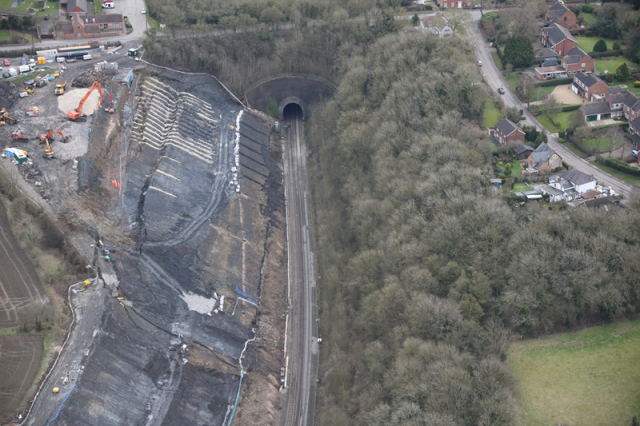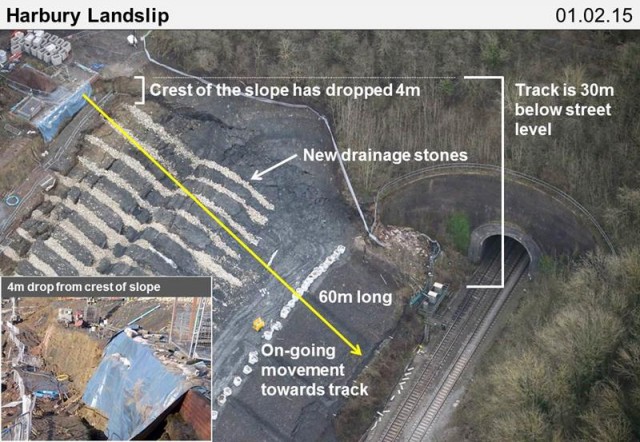4 February 2015
Harbury Tunnel landslide: an update from Network Rail
Posted by Dave Petley
Harbury Tunnel landslide
Yesterday, Network Rail put out a press release providing a great deal more information about the status of the Harbury Tunnel landslide in Central England. From a landslides perspective the key information is that they had been undertaking stabilisation work on the slope after the landslides on 14th February 2014. They are now estimating that 350,000 tonnes of material will need to be removed, such that the railway line will remain closed for some weeks.
Perhaps the most helpful aspect is the images that they released of the site. This one shows an overview of the failed slope:
.
Whilst this annotated image shows the failed slope in more detail:
.
The openness and the clarity of information provided by Network Rail is very admirable. The Harbury Tunnel landslide is complex – the big (4 m) drop of material at the top of the slope appears to support a rotational mechanism, but the very complex deformation in the area of the gravel drains is more difficult to understand and requires proper mapping. The top image suggests that the slope is bulging in the toe area. Weather conditions are currently cold and mostly dry, and fortunately there is no heavy rainfall in the forecast for the coming days. Once the slope stops moving then it might be possible to start to carefully remove material from the crest, which will improve the stability of the site, allowing proper mitigation.
An important question is centred on how this failure occurred during the stabilisation works. Network Rail and its consultants have both very skilled engineers and robust design and construction practices. It will be interesting to find out in due course what unanticipated factor led to this slope failure. At present no structures at the top of the slope have been affected, and the tunnel itself looks to be outside the boundaries of the slide. From those perspectives the Harbury Tunnel landslide could have been far worse.




 Dave Petley is the Vice-Chancellor of the University of Hull in the United Kingdom. His blog provides commentary and analysis of landslide events occurring worldwide, including the landslides themselves, latest research, and conferences and meetings.
Dave Petley is the Vice-Chancellor of the University of Hull in the United Kingdom. His blog provides commentary and analysis of landslide events occurring worldwide, including the landslides themselves, latest research, and conferences and meetings.